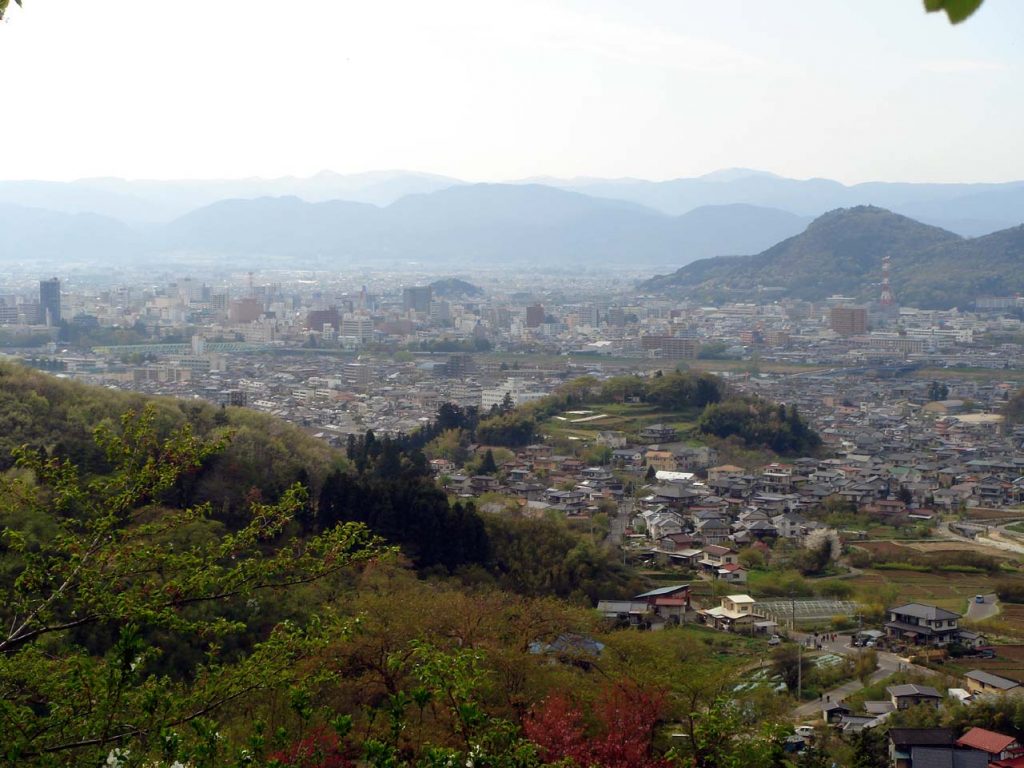
View of Fukushima Basin from Hanamiyama Park
The Prefecture
This month, 11 March 2021, was the tenth anniversary of the Tōhoku Earthquake which hit Fukushima Prefecture as well as other areas. Located in Japan’s north-east Tōhoku Region, with the third-largest prefecture by area in Japan it is well known throughout the country for its breathtakingly beautiful natural landscapes and a wide variety of famous local food products, and has a population of 1,827,283 (Aug 2020).
The 2011 Tōhoku Earthquake and tsunami and the resulting Fukushima Daiichi nuclear disaster caused significant damage to the prefecture. Reconstruction has been achieved at a rate beyond expectations but 28,959 people (Jan 2021) are still living away from the prefecture having been evacuated to other areas of Japan.
Raising public awareness of disaster preparation
Fukushima Prefecture has published a public disaster management and preparation guide called “Sonafuku-Handbook” (a portmanteau of sonaeru meaning to prepare and fuku from Fukushima) written to enable residents both Japanese and from overseas to take advance measures for a range of disasters, such as typhoon, earthquakes and tsunami, in the hope of saving lives.
The Fukushima Risk Management Centre is a prefectural facility which is also open to the public to encourage them to take steps to ensure their safety and encourage them to learn about disaster prevention.
An English version of the Sonafuku-Handbook can be viewed here
Background
Japan is an earthquake-prone nation and after the 2011 Tōhoku earthquake, aftershocks continue to hit the country. In addition, Typhoons resulting in flooding and landslides are becoming more frequent meaning increased disaster preparedness is becoming a necessity.
Lessons
The Sonafuku-Handbook was devised to promote community groups and civic society talking about various disaster scenarios in schools, local communities, workplaces, within the family and so on.
For example, schools and workplaces have a disaster drill every year where this guide is used as training material to learn how to plan for saving lives and taking action in emergencies.
At the Fukushima Risk Management Centre, visitors can tour the facilities and can take part in a simulated disaster using their smartphone, as well as take lectures for disaster preparedness. Many people visit these facilities on study tours. Additionally, The Fukushima Risk Management Centre, which opened on September 28, 2016, is a crisis management base for emergency response, responsible for all possible reaction for the initial measures in a disaster.
Fukushima Prefecture uses the centre to work closely with stakeholder organisations such as fire departments, police, and the Self-Defense Forces, to centrally collect and share information on disasters, promptly decide on countermeasure policies, and respond rapidly and effectively to situations.
With the necessary know-how and access to information, people are enabled to prepare in advance as well as take action as soon as a disaster starts which will help save lives until support from the government reaches them. Fukushima Prefecture wants to protect more people from disaster and through encouraging grassroots discussion, Fukushima prefectural government will continue to ensure the safety of residents.
Picture: By BehBeh at Japanese Wikipedia, CC BY-SA 4.0, https://commons.wikimedia.org/w/index.php?curid=37055740

